Recently, a communication industry incident that occurred nearly two years ago was suddenly re-exposure by netizens. The main protagonist is Lenovo. The cause of the incident is that from the beginning of May, the online social platform has been constantly appearing about "Lenovo has not voted for Huawei on the 5G solution, but voted for Qualcomm", which led to Lenovo's "no" The paradox of patriotism.
As mentioned above, the fuse of the incident occurred nearly two years ago. From August to November 2016, 3GPP (3rd GeneraTIon Partnership Project), the world's most influential communication standardization organization, held three meetings on the future standard of 5G technology. Because the early mobile communication standards were each fighting and incompatible with each other, it caused difficulties in roaming and network interfaces. Therefore, as the industry's authoritative organization, from 3G, 4G, to the upcoming 5G, 3GPP will coordinate the formation of technical standards and norms in the communication field. And no doubt, in the face of the upcoming 5G tide, all companies will make their best choices in their own interests. It was the wave of clouds in these three meetings that made Lenovo fall into the whirlpool of public opinion after a year and a half.
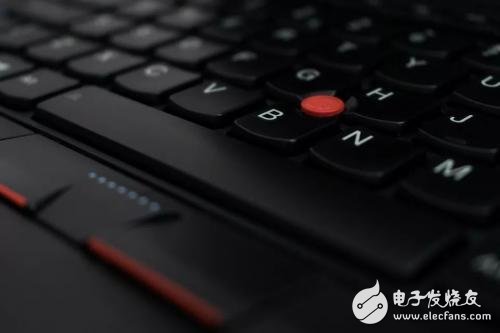
Figure: pixabay
To find out if Lenovo has been defamed, we can start with the facts. Since 3GPP is a very public organization, we can download the records of all three meetings from its official website, which records the truth of the matter.
First meetingAt the first meeting (86th) in August 2016, LDPC, Polar and Turbo were officially proposed. Deng Zhiqiang, a communications industry expert and founder of Mobile Communication Network (MSCBSC), told this magazine that Turbo coding is now in use in 3G and 4G, but on 5G, it can not meet the demanding requirements of 5G for the network, so basic It is abandoned; the advantages of LDPC in the "data channel" are outstanding, and Polar's advantage in the "control channel" is also obvious. The standard used is closely related to the interests of various vendors.
"On LDPC, Qualcomm occupies major patents (about 70%), Huawei, ZTE, Ericsson, etc.; and on Polar, Huawei accounts for the majority, and other manufacturers also account for a part." Deng Zhiqiang told this magazine. Therefore, we can think that the LDPC solution is led by Qualcomm, the Polar solution is led by Huawei, and the criteria for "data channel coding" and "control channel coding" are the focus of competition in these three meetings. "Because once When the standard is decided, in the future, when the communication equipment is produced, the unpatented enterprise will pay the license fee to the relevant enterprise, and both parties have the patent to authorize each other. But the two parties are not completely opposite, and many manufacturers are betting on both sides. There are a lot of interests involved in each other.
From the minutes of the meeting, we can see the opinions of different companies at the first meeting:
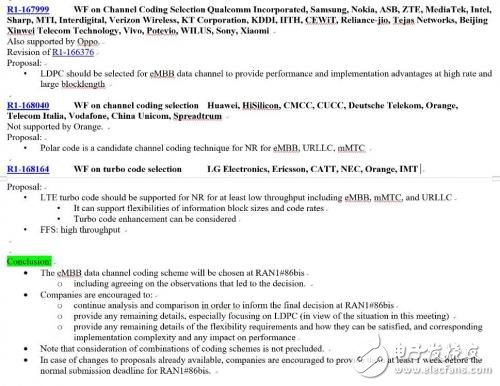
To sum up, roughly:
Supporting LDPC solutions include Samsung, Nokia, ZTE, MediaTek, Intel, Sharp, vivo, OPPO, Xiaomi and other companies, including a number of Chinese manufacturers.
Supporting the Polar solution are Chinese companies such as Huawei HiSilicon, China Mobile, China Unicom and Spreadtrum, as well as a number of European and American telecom operators.
There are fewer support for the Turbo program, only a few representatives such as Ericsson, NEC, and Orange Telecom of France.
Since everyone's opinions could not be unified, the meeting decided to make another decision next time. Lenovo did not appear in the list of statements at the first meeting.
Second meetingAt the second meeting in October (86b), as the intensity of the discussion continued to rise, the voting situation also changed:
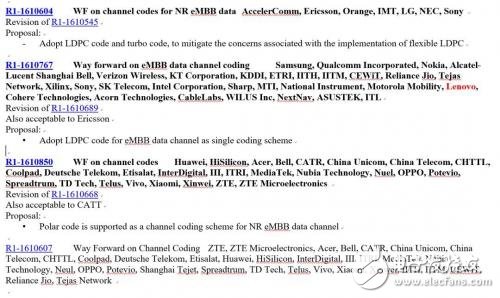
The first appearance of Lenovo here, it is clear that they chose to support the LDPC program led by Qualcomm; and the Chinese companies such as vivo, OPPO and Xiaomi who chose to support this program in the first meeting turned their direction and chose Support Huawei's leading Polar solution.
But in the final discussion, a very significant change occurred, that is, the difference between long and short codes appeared in the choice of data channel. Therefore, from the figure below, we can see four results:
Many LDPC program supporters choose it for both long and short codes;
Huawei only supports the Polar solution;
The few companies that support the Turbo+LDPC program;
The number of people supporting the LDPC+Polar program is large, including most Chinese companies.

The result clearly tells us that because only Huawei's own claim on the long code, even Huawei's own HiSilior did not advocate, it can be seen that LDPC is not controversial on the long code of the data channel. So the main controversy this time is focused on the short code of the data channel.
And here is the most common evidence of Lenovo’s criticism. In addition to Lenovo, other Chinese companies have supported the LDPC+Polar solution. However, the final resolution was still not made at this meeting. At the last third meeting, the situation changed.
Third meetingAt the last meeting in November (87th), I finally came to a conclusion. Since the data channel long code is uncontroversial, the voting is concentrated on the short code scheme:

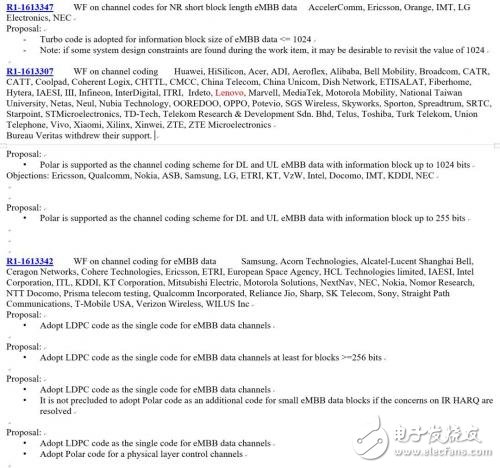
The LDPC solutions include 33 companies including Qualcomm, Samsung, Alcatel-Lucent and Nokia.
Support for Polar solutions include: Huawei, Huawei Hisilicon, Acer, China Mobile, China Telecom, China Unicom, Lenovo, MediaTek, Motorola Mobility, Nubia, OPPO, Toshiba, vivo, Xiaomi, ZTE, etc. in China and Taiwan 57 companies based in regional companies.
It seems that Huawei is winning, but there is a problem here. The vote here is not calculated by the number of votes, but the weights between the different tickets are different. Deng Zhiqiang told this magazine that although Lenovo and its Motorola Mobile have switched to Huawei this time, their voting share and influence in 3GPP are not high enough. "Lenovo + Motorola, the total voting rights may not be enough for Nokia's three. One of the points." In the end, because the voting rights of the supporters of the Polar program are not high enough, the final result is that the LDPC solution gets the full share of the 5G mobile broadband data channel.
In the vote of the control channel, which is dominated by the Polar solution, Huawei naturally won.
to sum upTo sum up, unlike many rumors circulating on the Internet, for example: "Lenovo voted for Qualcomm on the short code of the data channel, causing the Huawei Polar code to lose to the Qualcomm LDPC code at 23:24." "The victim" Huawei as early as a few days ago Just clarified the truth on Weibo: At the 3GPP conference in November 2016, Huawei and 55 other companies (including Lenovo and Motorola Mobility) jointly proposed Polar code as the control channel code based on extensive performance evaluation and analysis comparison. The mechanism was passed, and Lenovo and its Motorola Mobile vote for the program were in favor.
As for Lenovo's most criticized vote in the second meeting, Lenovo chose both long and short codes to support the LDPC solution, while other Chinese companies have supported the LDPC+Polar solution. This is not enough to test Lenovo’s “unpatrioticâ€, because in the first meeting, several Chinese companies including vivo, OPPO, and Xiaomi did not stand the Huawei Polar solution, but indicated that they supported Qualcomm-led LDPC solutions. .
It can be seen that the choice of such voting is by no means immutable, and each company will make the choice that best suits its own interests according to the situation at the time. As pointed out by insiders, the purpose of all participants in the 3GPP organization is not simple. The core factor for all vendors to think about is "interests", and it is aimed at the interests of the manufacturers themselves, the interests of the industry, and the interests of the country. Comprehensive judgment made by interest factors.
Deng Zhiqiang also told this magazine that for Lenovo, which was hit by public opinion, compared with companies such as Huawei and Qualcomm, the discussion and choice of participating in the 5G standard a year and a half ago did not affect it much, but it was in its hands. There are also some patents. Therefore, the direct interest relationship of this choice to Lenovo is: "If the final plan is beneficial to itself, then in the future, when the related equipment is produced, the proportion of patent swaps will be higher, and the patent license fee can be paid less."
Behind a single event is Lenovo’s overall dilemmaOf course, because of such rumors and falling into such a serious public relations crisis, Lenovo is trying to restore the truth and restore its reputation. It should also reflect on itself: why such unconfirmed rumors can make users Negative emotions broke out.
This morning, Liu Chuanzhi, chairman of Legend Holdings and founder of Lenovo Group, issued a response. In addition to clarifying his voting facts, he recalled Lenovo’s entrepreneurial journey. But for them, it is even more important to think about why the once brilliant Lenovo has fallen into the muddy downturn in recent years. You know, since the stock price hit a 15-year high in 2015, Lenovo's market value has evaporated by two-thirds.
Since the beginning of FY2014, Lenovo's financial performance has been declining. The profit of Lenovo Group's equity holders was 828 million US dollars, and the growth rate has shrunk from 2.87% in the previous fiscal year to 1.47%. In the subsequent fiscal year 2015, Lenovo Group had a net profit loss of $128 million. In fiscal 2016, Lenovo's loss expanded to $566 million. At the same time, they also surrendered their position as the leader of the global PC market in 2017.
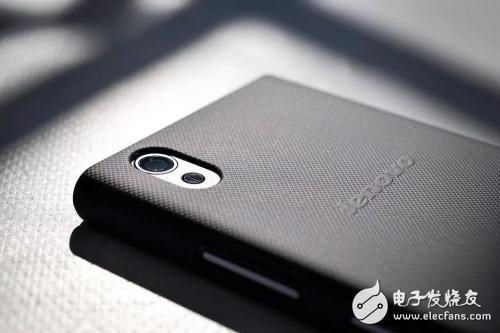
Figure: pixabay
Of course, they finally stopped their losses and turned losses into profits in the last fiscal year, but many of their core issues have not been resolved.
First and foremost is its poor performance in the mobile market. In 2014, Lenovo made the decision to acquire Motorola. Although this decision allowed them to expand their mobile phone business to multiple markets around the world, it did not bring much improvement in actual sales. In 2015, the total sales volume of Lenovo's smartphones decreased by 10 million units compared with the previous year. The financial report shows that it is mainly subject to the decline of the Chinese market. In FY2016, global sales of Lenovo smartphones fell again by 22% year-on-year. In the era of "China Cool Alliance", Lenovo's mobile phone market share in China is almost the same as that of Huawei. However, we can hardly see Lenovo.
According to the 2017 global smartphone sales ranking released by the research company Counterpoint Research, Lenovo smartphone sales in 2017 fell 2% year-on-year, from 50.7 million in 2016 to 49.7 million in 2017, ranking the world's number one. 8, the market share is only about 2%.
In an interview with the media in February this year, Yang Yuanqing himself said, "Reviving the mobile phone business is still our goal, but we need several quarters to get results. In emerging markets, we are transforming the mobile phone brand from Lenovo to Motorola. But not very well. We need to clean up the inventory and rebuild the brand."
The situation of the traditional PC business is not too good. Lenovo's latest third-quarter results report for the 2017/2018 fiscal year shows that revenue from the PC and smart device business increased 8% year-on-year to $9.25 billion, accounting for approximately 72% of total revenue. There is no doubt that PC is Lenovo's most important revenue pillar. But another fact is not controversial. The PC is also a shrinking industry. According to Gartner data, the PC market has experienced a downward trend for 14 consecutive quarters. In the latest first quarter of 2018, global PC shipments were 6170. Wantai, down 1.4% from the first quarter of 2017.
It is impossible to make breakthroughs in the existing mobile terminals, and Lenovo has not made any achievements in the future innovation fields such as artificial intelligence, and can only adhere to some traditional fields in the twilight period. Lenovo needs to solve many problems. At the same time, it has long been plagued by rumors such as “the price difference between China and the United States is too big†and there is no solution. It can only watch its brand image decline step by step, and finally there is a big outbreak in this “5G voting eventâ€. Although the fuse of this incident is not true enough, it is not fair to Lenovo, but the trouble itself is not difficult for them to solve; how to solve the various difficulties faced by Lenovo behind it I am afraid it is a bigger test for them.
Push Wire Connectors,fast connectors,Push In Connector,Quick Wire Connectors
Jiangmen Krealux Electrical Appliances Co.,Ltd. , https://www.krealux-online.com